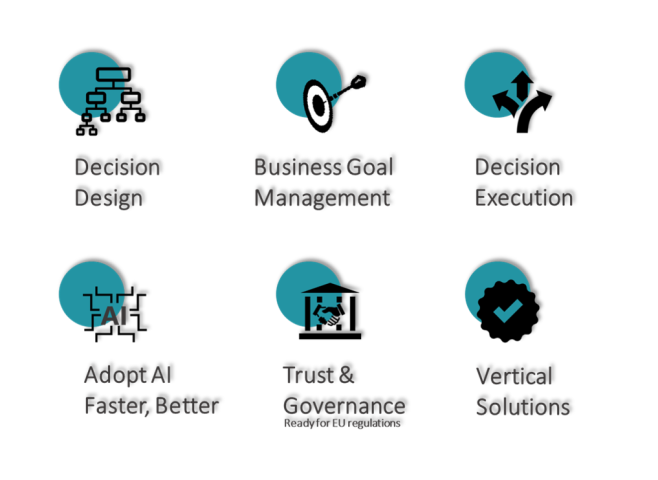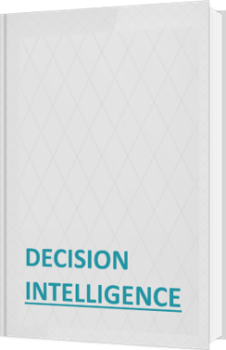Decision intelligence is the new business intelligence
Decision intelligence (DI) goes one step further than business intelligence, by not just providing decision augmentation - giving the information people need to make better decisions - but it will also deliver decision automation - fully automated decisions within seconds, seven by seven.
If it cannot or is not allowed to make the decision itself, the decision is rerouted to the right person who will also receive the created
insight whereby the key inputs are highlighted. As such, your staff can focus on taking the right decision as opposed to information gathering.
Maybe this sounds to you like Artificial Intelligence (AI) and it's certainly plays a role. However, AI alone has historically failed to achieve the level of automation in all but a few cases and those projects have a sad track record of failing in 80% of the cases.
To optimize decision-taking within real business processes in production, we need something new. This secret sauce is called 'context'.













